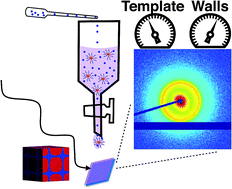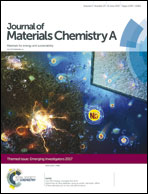How to make persistent micelle templates in 24 hours and know it using X-ray scattering†
Abstract
The controlled fabrication of nanoscale materials can enable new behaviors and properties as well as improved performance. For example, many electrochemical devices are made from porous materials where the architecture of both the porosity and the material each affect distinct processes. Recently, persistent micelle templating (PMT) emerged as a unique nanofabrication technique that enables decoupled control over the porosity and wall material dimensions via self-assembly. PMT control relies upon kinetic entrapment to preserve the micelle diameter while adding material. However, the development of PMT is currently cumbersome where time-intensive polymerizations and solution parameter searches are both required. Here we report simple SAXS based geometric models that significantly expedite the identification of the PMT window with a one-pot titration-approach. The models also quantitatively predict the nominal template diameter and wall-thickness within the PMT window. This approach yielded the first PMT criteria for a low molar mass block copolymer with ∼13 nm mesopores and continuously tunable wall-thickness with 2 Å increments. Furthermore, we demonstrate an accelerated synthesis that includes custom polymer fabrication and micelle templating within 24 h. The polymer synthesis was demonstrated without high-vacuum equipment and only used low-cost, commercially available reagents. These advances will ease and accelerate the use of PMT for a wide gamut of nanomaterials investigations.

- This article is part of the themed collection: Journal of Materials Chemistry A Emerging Investigators


 Please wait while we load your content...
Please wait while we load your content...